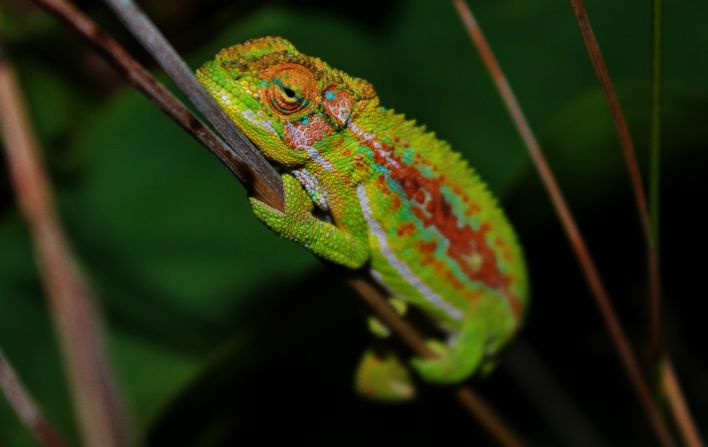
It may not look spectacular, but the Cape Flats Sand Fynbos at Cape Town's Kenilworth Racecourse is one of the most botanically diverse sites in the world.

Kenilworth Racecourse Conservation Area (KRCA) is a 52 hectare site at South Africa's oldest horse racing venue. The Cape dwarf chameleon (pictured) is one of dozens of endangered species that inhabit Cape Town's fynbos vegetation.

The Cape Flats Sand Fynbos is a critically-endangered vegetation type in South Africa's Western Cape. Around 14% is estimated to remain in the world with only 1% of that conserved. The scrubby-looking vegetation is deceptively rich in plant and animal species. The KRCA is home to more than 350 plant species including the Sea rose -- Orphium frutescens (bottom left) -- the Cape bluebell -- Wahlenbergia capensis (top left) -- and the Erica -- Erica verticillata (right) -- which is classified as extinct in the wild.

KRCA manager Rob Slater takes CNN WInning Post presenter Aly Vance on a guided tour of the conservation area.

There is also a variety of rare animal life including nine amphibian species. This is a micro frog, so called because of its tiny dimensions -- roughly the size of a fingernail or two centimeters (0.8 inches) long.

The tiny frog species with its distinctive bright green markings down its back are endemic to South Africa's Western Cape.

Ninety-three bird species also call the conservation area home, including this African Harrier Hawk ...

... and this Blacksmith lapwing -- one of five lapwing species in the world.

Kenilworth Racecourse and the conservation area, as seen from above. The fynbos in the Western Cape is more botanically diverse than the tropical rainforests of South America, according to the WWF.

A healthy population of Cape sand frogs also inhabit the conservation area. The species which measures around five centimeters in length on average is widely distributed across the Western Cape Province.

The fascinatingly unattractive Cape rain frog lives underground and only emerges above ground shortly before it rains. The KCRA is home to 16 seasonal wetlands which allows the populations of the frog endemic to the southwestern Cape to remain "quite healthy," says KRCA manager Slater.

The parrot-beaked tortoise grows to around 12 centimeters in length and is endemic to South Africa.
"The threat to the conservation area in the past was poaching and there was another species of tortoise but we are only left with parrot-beak," Slater told CNN. "Their numbers are about 100 --- the main thing is that they are reproducing."
"The threat to the conservation area in the past was poaching and there was another species of tortoise but we are only left with parrot-beak," Slater told CNN. "Their numbers are about 100 --- the main thing is that they are reproducing."

The Cape grysbok is a small antelope endemic to the Western Cape.

The non-venomous mole snake can grow up to two meters.

Throughout the year, flowers bloom bringing color to the conservation area including Watsonia (left) and the Moraea tripetala from the Iris family (top right). The Erica margaritacea (bottom left) with its delicate white flowers is a site endemic species -- meaning the conservation area is the only place in the world where you can see the flower.